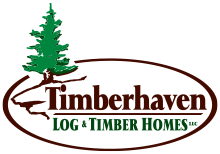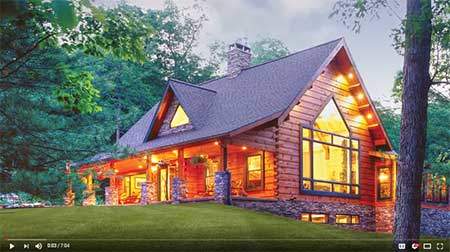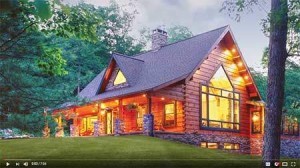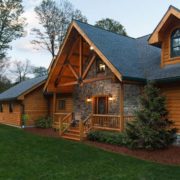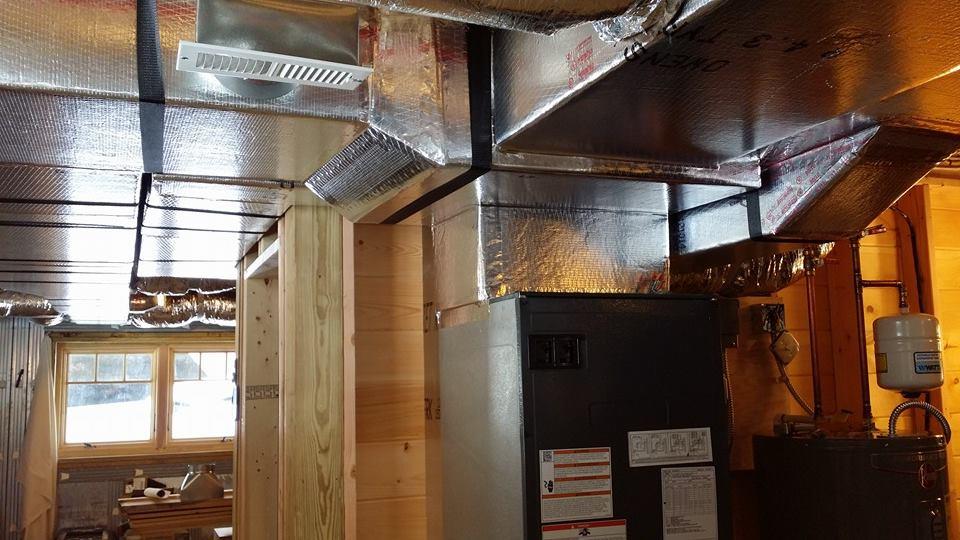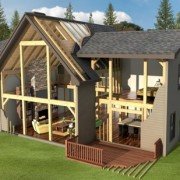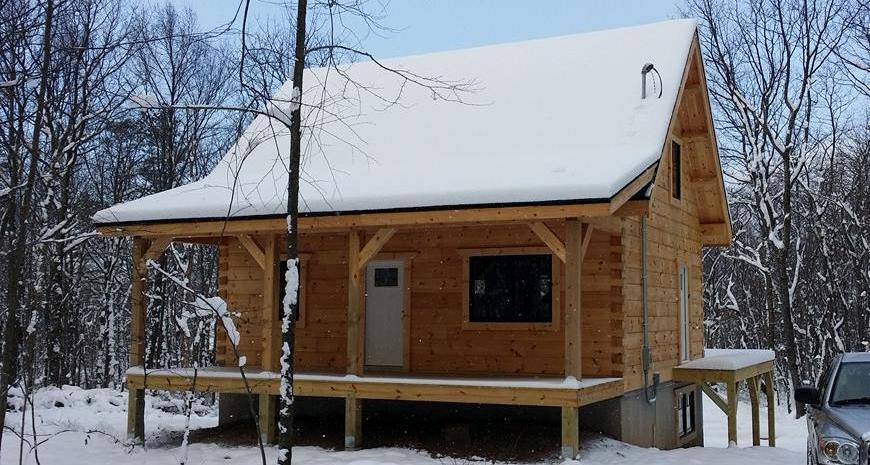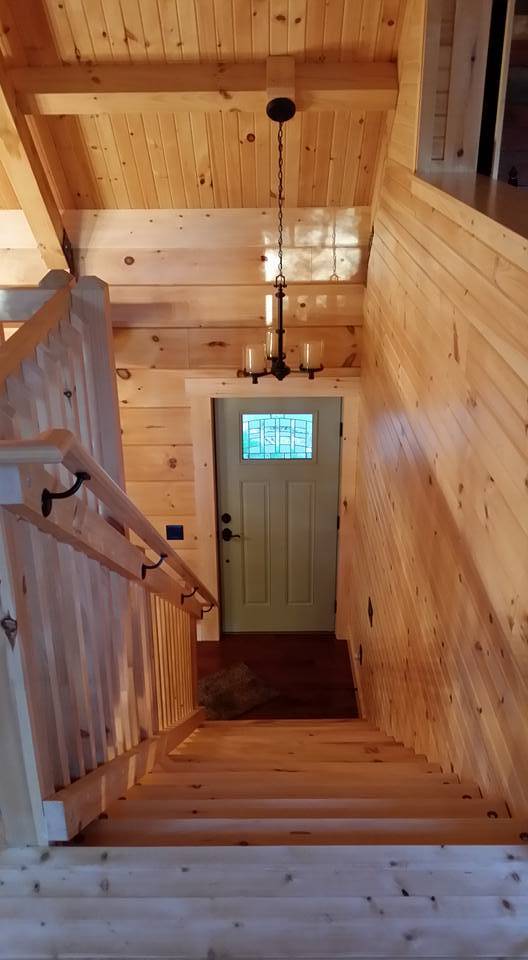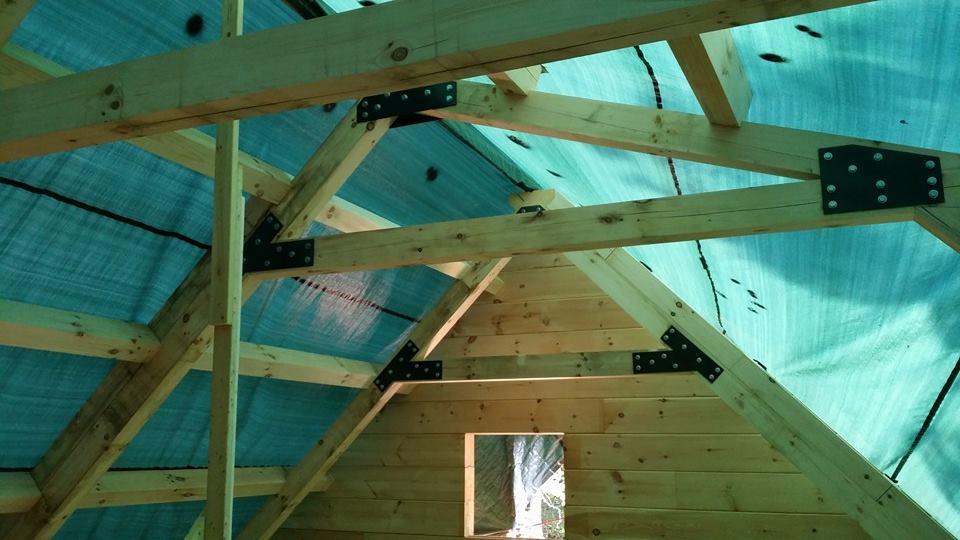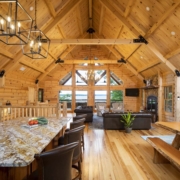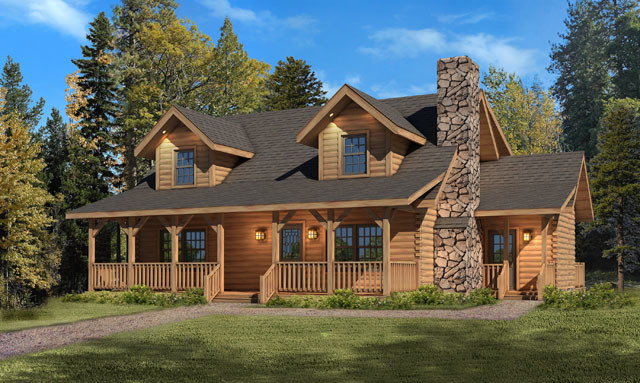Log Homes Built with Engineered Logs
Over the past few years, we have been hearing a lot more about laminated logs, engineered logs, or architectural-grade logs throughout the log home industry, and you have no doubt heard the debate of the advantages of kiln dried logs over air dried. But, what do all of these terms mean, and how do you as a customer determine the right choice for your home? (Click the video below or continue reading for details.)
Laminated and engineered terms are used interchangeably. At its simplest, an Engineered Log has less than 9% average moisture content and is made by taking 2x slabs of kiln dried wood and bonding them together to desired thickness before milling them to the profile of your home. Because it begins with thinner pieces of wood, it is easier to ensure consistency, better regulate moisture content, and select only the best quality cuts from a log.
Kiln drying is the process of using heat and evaporation in a controlled environment to remove moisture content from the wood, less than 19% average moisture content, allowing the wood to reach the moisture content it will assume during its service life, effectively preshrinking the logs to minimize warping, twisting, and checking in the future. This process differs significantly from air dried logs which are simply left in an open, uncontrolled environment to slowly dry, often resulting in a log with a higher moisture content that is susceptible to excessive shrinking and warping after the home is built.
“Proper kiln drying procedures control the drying environment and reduce the amount of severity of drying induced defects. Drying wood prior to installation provides an opportunity for the wood to maintain relatively stable dimensions during service.” ~Paul Blankenhorn, Ph.D., Professor of Wood Technology, Penn State University
The final moisture content is measured in accordance to grading standards set forth by the Log & Timber Homes Council . After the 2x Engineered plies are properly dried, they are ready to be bonded together as a solid log.
The laminating process begins with each ply of freshly milled lumber being run along a conveyor where glue is applied to one side of the wood. These wooden slabs are then taken up a conveyor where they are aligned and stacked, ready to go into the radio frequency dryer.
The wood is placed into the dryer which not only dries the glue but uses pressure to compress the timbers and ensure a tight bond with the glue. A radio frequency dryer works faster than traditional dryers, and the log is ready for strength testing in less than six minutes.
Speaking of compression, we recently caught up with Todd Noe, a builder of log homes, who had this to say about our Engineered material. “I have worked with Ben Pittman from Big Sky Log Homes on building many Timberhaven log houses – even before Timberhaven, Ben and I built Kuhns Brothers log homes for quite a while. The laminated (aka Engineered) log idea was probably one of the most ingenious engineering feats in the industry. The logs are much straighter, there are very few checks – if any at all – and they are a lot straighter which results in less fight to get the logs to line up and so on. One of the other things I have noticed that because the log are compressed under pressure, they seem to be harder which, in turn, when drilling holes for electrical, leaves a cleaner hole and less splintering at both ends. As a builder, this makes my job easier. I am hoping we get to build a few more Timberhaven log homes in the future.”
After the lamination process is completed, a sample is cut from each new timber to ensure it meets or exceeds the strict breaking tolerances of 1300 PSI along the glue line set forth by the log home industry. During testing, a properly Engineered Log will break along the wood grain long before it ever breaks along the glue line.
The benefits of an Engineered Log are many.
- First of all, an Engineered Log experiences virtually no checking, it is dryer than other log options with an average nine percent moisture content, and different wood species can be used for the exterior and interior finishes while still accepting stains and preservatives the same as conventional logs and timbers.
- Engineered Logs are stronger than traditional solid logs because the alternating grain of the individual plies provides added strength and stability.
- The environmental impact of Engineered Logs is also less than that of conventional logs since there is less waste produced from the manufacturing process, making them an environmentally friendly, renewable building product.
- We have also reported fewer callbacks and customer service related issues with Engineered Logs, meaning that home builders can spend more time on constructing their home without unwanted problems arising.
“My laboratory has tested the long term exposure performance of Timberhaven’s laminated logs. Our tests … found that laminated logs performed at a higher level than solid logs. … The laminated test logs were stacked outside, fully exposed to the weather, with no exterior finish applied. … No failures of any kind have been observed during the 9 year evaluation. … Structural strength and dimensional stability during severe weather exposure shows these logs provide a mechanically strong, functionally durable and aesthetically attractive log structure.” ~Edwin J. Burke, Ph.D., Director University of Montana College of Forestry and Conservation
“Laminated building logs produced by Timberhaven have demonstrated compliance on a continuous basis with the inplant quality assurance program described in The Log Homes & Timber Homes Council Log Grading Manual.” ~Larry Beineke, Ph.D., PE Vice President Southeast Region, PFS Corporation
At Timberhaven, we have combined the best of all manufacturing processes and structural elements into a sturdy, stable, and sustainable product – the Engineered Log. And it is available in a variety of sizes and profiles for all log homes. To learn more about our critically acclaimed Engineered Logs and timbers, contact us today!
